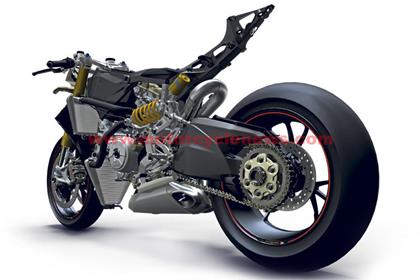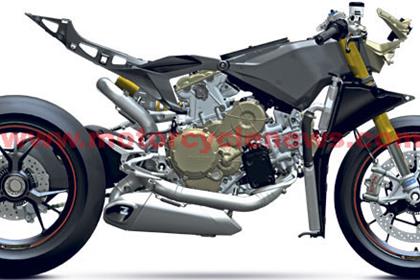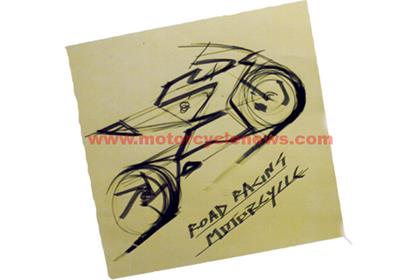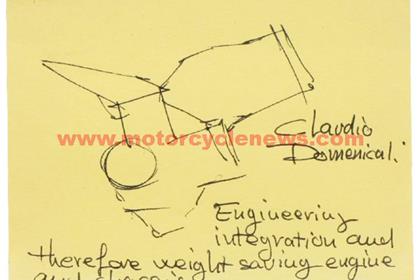Ducati 1199 Panigale - A new way of building a superbike
The targets laid down for the 1199 Panigale were so strict, so binding and so difficult to achieve that nothing less than a complete rethink was going to be enough.
That maent ditching Ducati’s tradition of a steel trellis frame and embracing something completely new.
Monocoque chassis design
The biggest break with Ducati tradition is the all-new aluminium monocoque chassis which, says Ducati’s Claudio Domenicali, has nothing to do with marketing and everything to do with engineering necessity.
The monocoque replaces the trademark Ducati steel trellis frame with a die-cast aluminium airbox which acts as a stressed part of the chassis with the steering head and engine directly attatched to it.
![]()
Domenicali explains: “The monocoque chassis deign stems from the absolute rule we set out at the start of the design to reduce overall weight by 10kg. This new chassis design was simply the only way we were going to achieve that. The monocoque chassis is responsible for half of the weight saving of the bike.”
Electronically controlled Ohlins suspension
The top specification S and S Tricolore versions of the 1199 Panigale are introducing electrically controlled and adjusted Ohlins suspension into the superbike category for the first time.
The 43mm Ohlins NIX30 forks can be adjusted for compression and rebound damping using a switch on the left handlebar. Spring preload remains a manual adjustment.
|
At the rear the Ohlins TTX36 has the same twin tube damping adjustment as seen at the top levels of racing. It is also electronically adjustable for compression and rebound with preloadoperated by hand. The shock’s side-mounted design should make it easy to adjust. Domenicali explains: “We wanted this bike to give a quantum leap in terms of the emotion of riding. We wanted riders to have a similar reaction to the bike as to a track-ready bike.”
|
Exclusive Brembo brakes and Marchesini wheels
You won’t be seeing these Brembo M50 monobloc calipers on any other bike as Ducati has signed an exclusive deal with the Italian firm. Not only do they look amazing but the compact caliper design contributes to a 500g weight saving over previous versions.
They are machined from a single piece of alloy making them stiffer and helping to resist distortion in racing – that’s vital in the Superstock class as standard calipers have to be retained. Each caliper has four 40mm pistons. ABS is an option.
There are two versions of wheels available on the Panigale. The standard 1199 features a new design of 10-spoke with a 3.5in wide front and 6in wide rear wheel. Each wheel is 500g lighter than previous designs.
The S and S Tricolore versions have forged aluminium triple three spoke wheels which save a further 400g.
The rear of all versions of the bike has a Pirelli Diablo Supercorsa SP tyre in a 200/55/17 size; the widest ever fitted to a road-going superbike.
Head of WSB racing, Ernesto Marinelli explains how Ducati got the 200/55/17 tyre size: “We have 20 years of racing data. We extrapolated information about power, wheelbase and tyre size and the 200/55 tyre size was one of the first elements of the 1199 which was set along with the road bike power and weight.”












